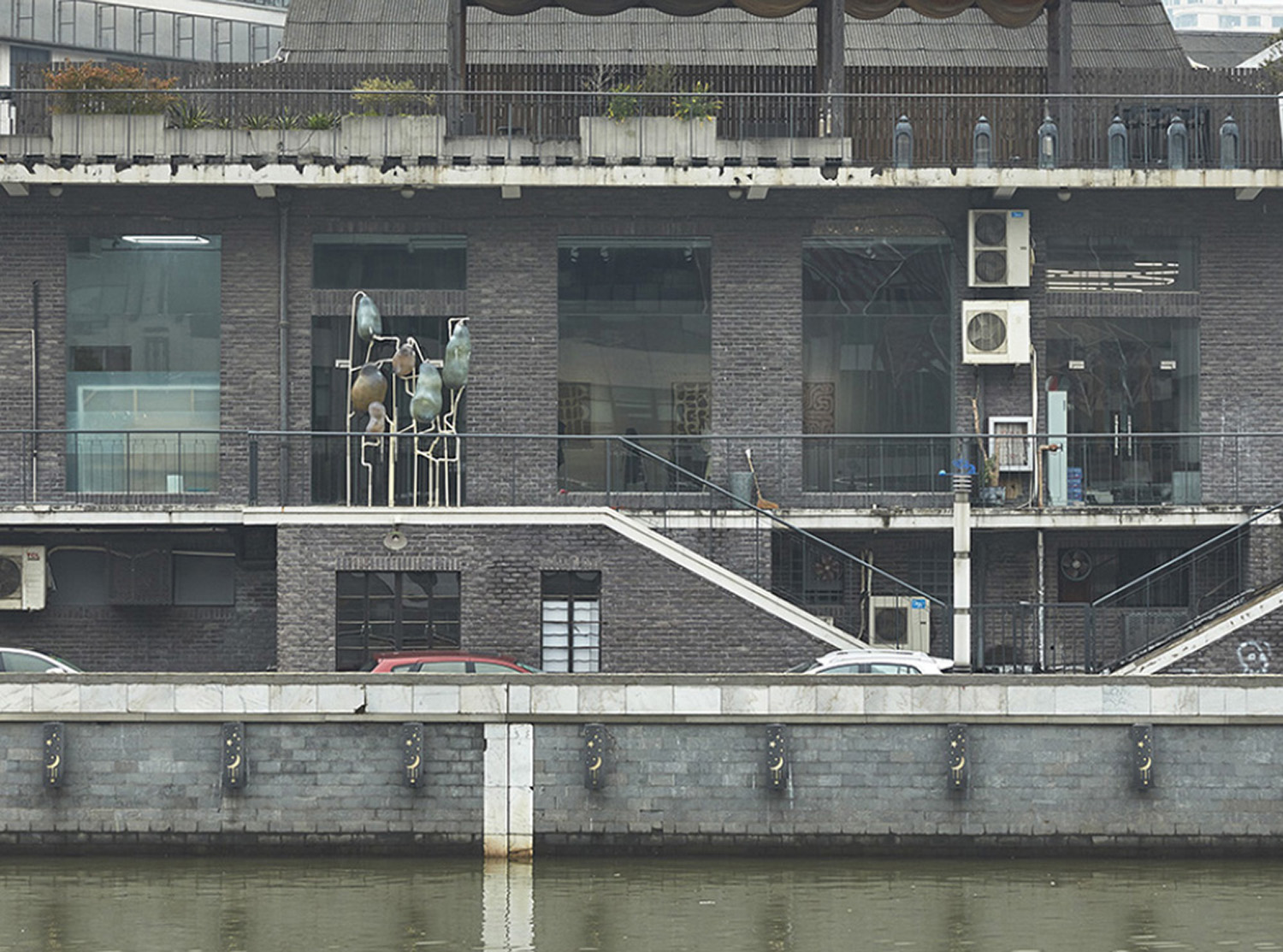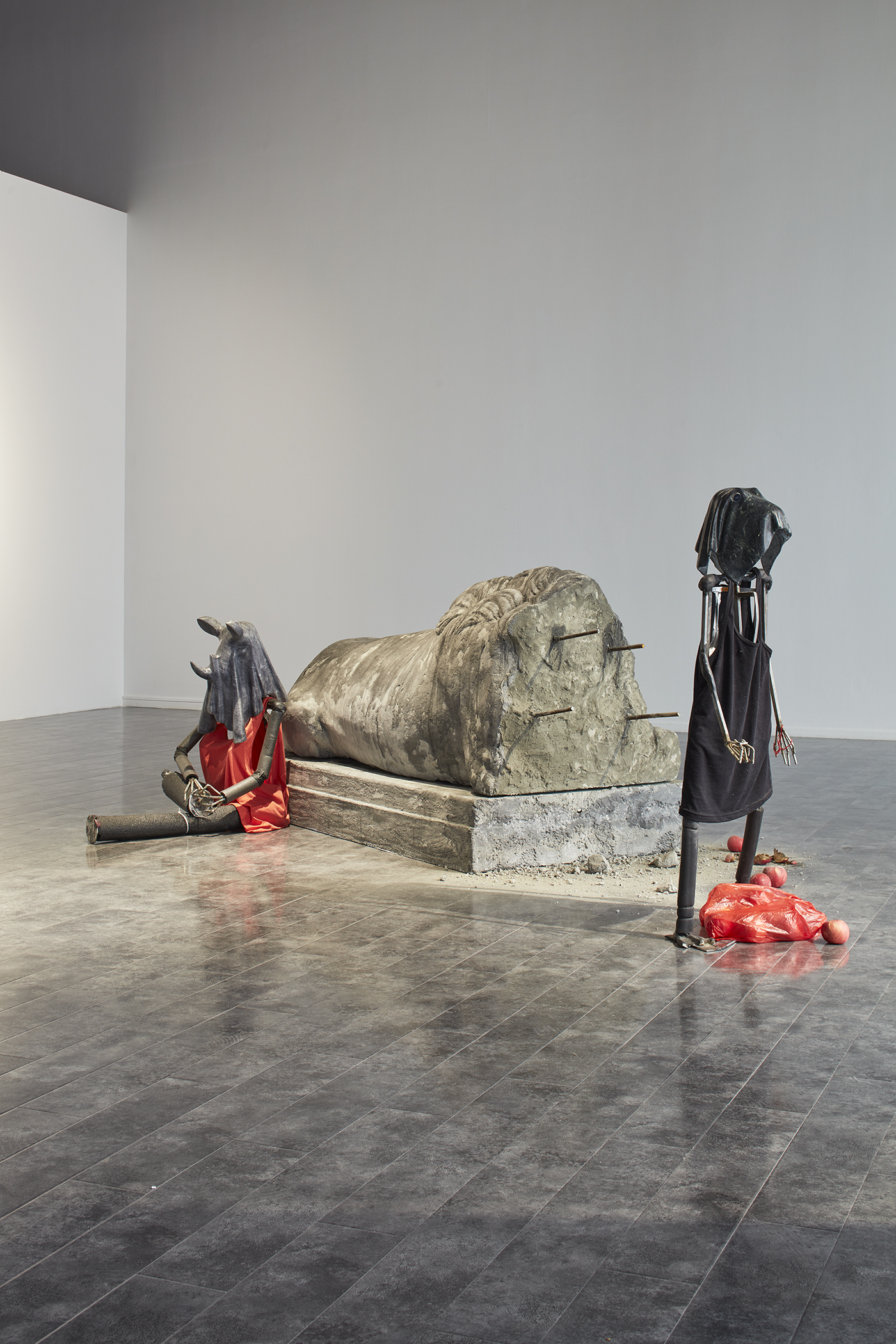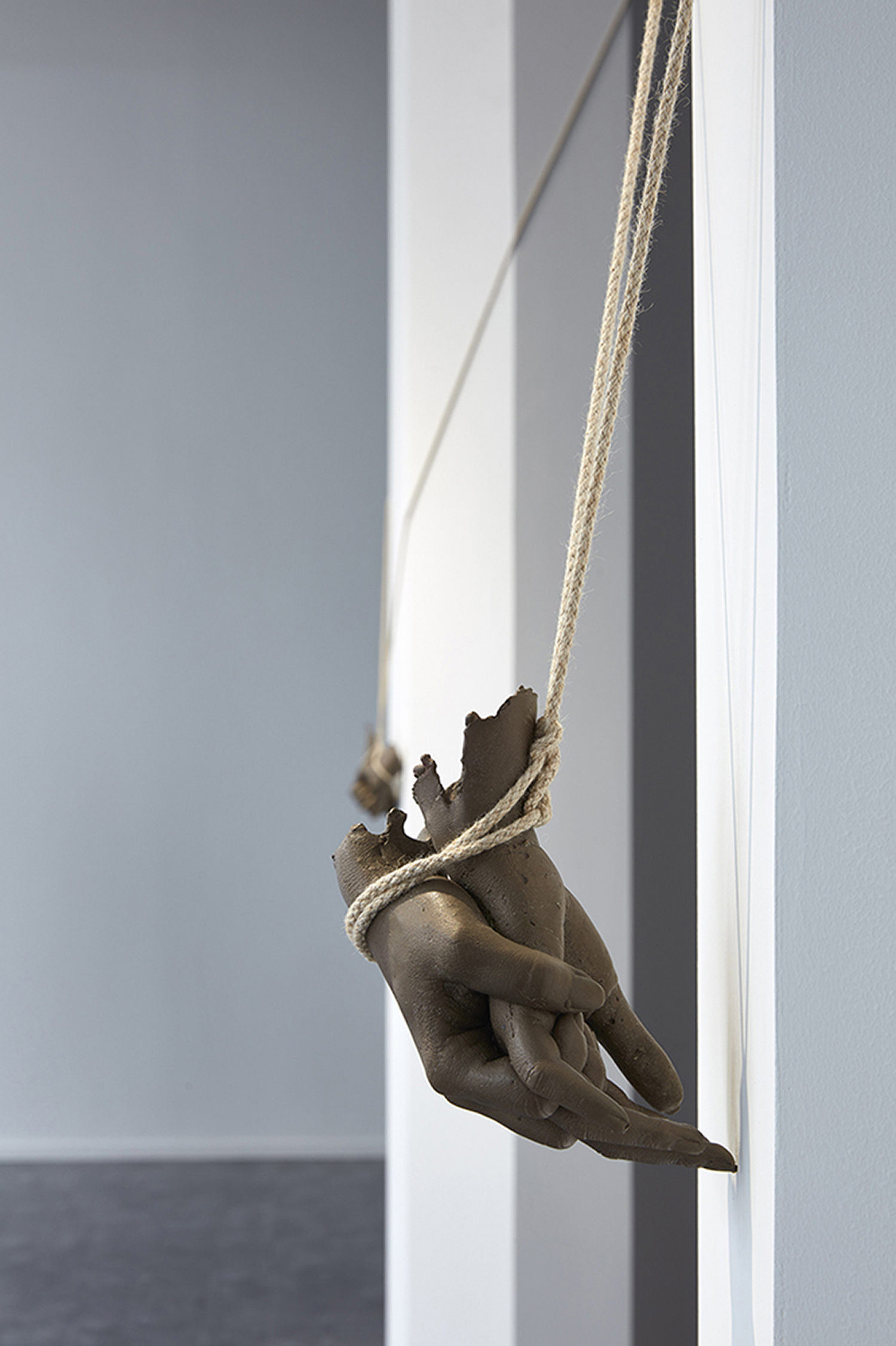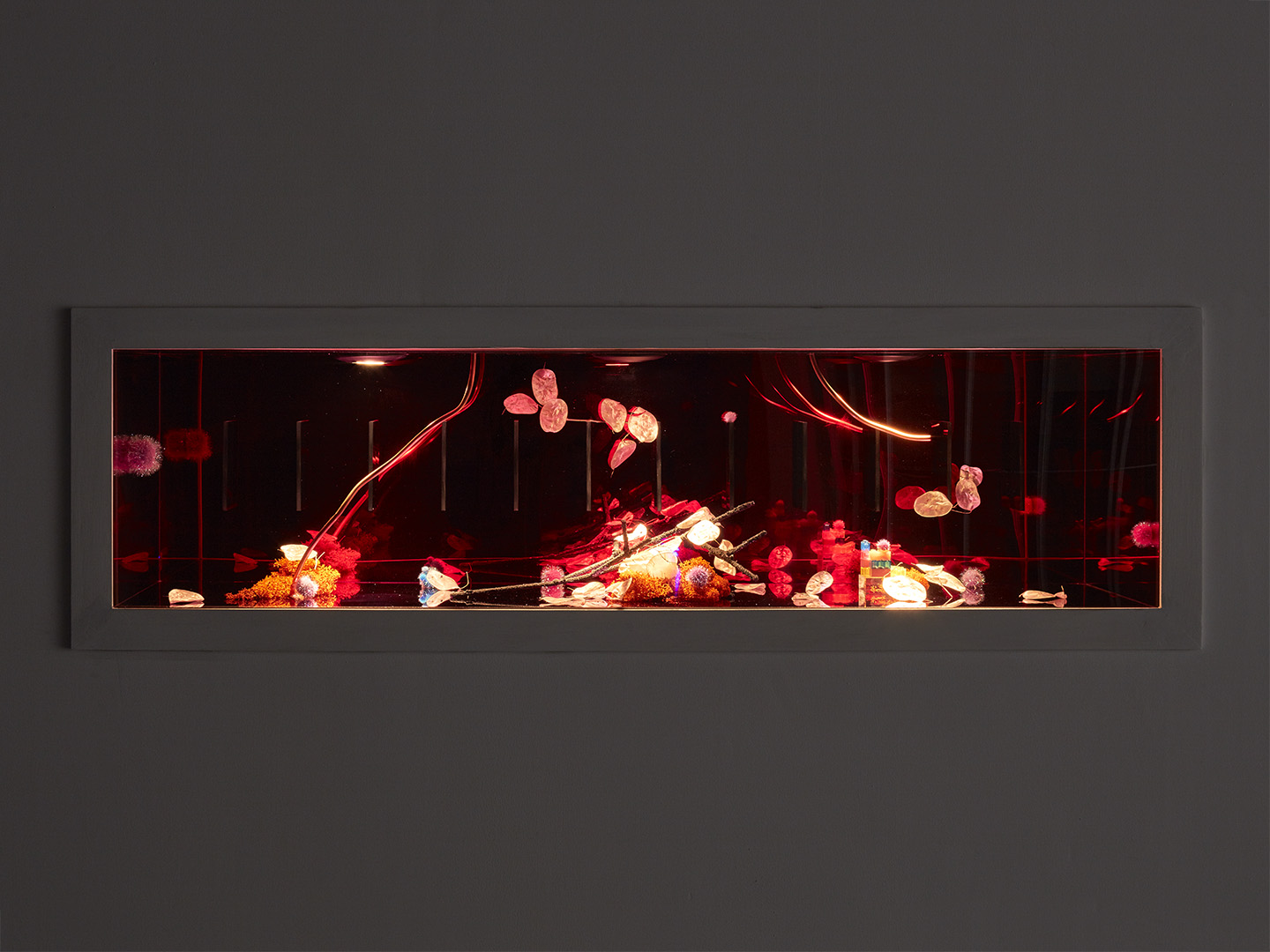Vertical Gardens
Kelly Akashi, Dora Budor, Lena Henke,
Julian Hoeber, Cui Jie, Ajay Kurian,
Lili Reynaud-Dewar & Max Hooper Schneider
Antenna Space, Shanghai
April 8–May 30, 2017
Vertical Gardens
Kelly Akashi, Dora Budor, Lena Henke,
Julian Hoeber, Cui Jie, Ajay Kurian,
Lili Reynaud-Dewar & Max Hooper Schneider
Antenna Space, Shanghai
April 8–May 30, 2017
Vertical Gardens
Kelly Akashi, Dora Budor, Lena Henke,
Julian Hoeber, Cui Jie, Ajay Kurian,
Lili Reynaud-Dewar & Max Hooper Schneider
Antenna Space, Shanghai
April 8–May 30, 2017
Vertical Gardens
Kelly Akashi, Dora Budor, Lena Henke,
Julian Hoeber, Cui Jie, Ajay Kurian,
Lili Reynaud-Dewar & Max Hooper Schneider
Antenna Space, Shanghai
April 8–May 30, 2017
Vertical Gardens
Kelly Akashi, Dora Budor, Lena Henke,
Julian Hoeber, Cui Jie, Ajay Kurian,
Lili Reynaud-Dewar & Max Hooper Schneider
Antenna Space, Shanghai
April 8–May 30, 2017

Cui Jie, Julian Hoeber
Installation view
Cui Jie, Julian Hoeber
Installation view
Cui Jie, Julian Hoeber
Installation view
Cui Jie, Julian Hoeber
Installation view

Dora Budor, Julian Hoeber, Kelly Akashi
Installation view
Dora Budor, Julian Hoeber, Kelly Akashi
Installation view
Dora Budor, Julian Hoeber, Kelly Akashi
Installation view
Dora Budor, Julian Hoeber, Kelly Akashi
Installation view

Kelly Akashi, Cui Jie, Julian Hoeber & Ajay Kurian
Installation view
Kelly Akashi, Cui Jie, Julian Hoeber & Ajay Kurian
Installation view
Kelly Akashi, Cui Jie, Julian Hoeber & Ajay Kurian
Installation view
Kelly Akashi, Cui Jie, Julian Hoeber & Ajay Kurian
Installation view

Lili Reynaud-Dewar, Ajay Kurian
Installation view
Lili Reynaud-Dewar, Ajay Kurian
Installation view
Lili Reynaud-Dewar, Ajay Kurian
Installation view
Lili Reynaud-Dewar, Ajay Kurian
Installation view

Cui Jie, Max Hooper Schneider
Installation view
Cui Jie, Max Hooper Schneider
Installation view
Cui Jie, Max Hooper Schneider
Installation view
Cui Jie, Max Hooper Schneider
Installation view

Dora Budor
The Forecast (The Shanghai Situation), 2017
Stainless steel, automotive paint, epoxy resin, hydrochromic paint,
hardware, screen-used silicone, plastic & latex special effects
appliances from various motion pictures, shifting weather conditions
84 × 47× 126 inches / 214 × 107 × 320 cm
Dora Budor
The Forecast (The Shanghai Situation), 2017
Stainless steel, automotive paint, epoxy resin, hydrochromic paint,
hardware, screen-used silicone, plastic & latex special effects
appliances from various motion pictures, shifting weather conditions
84 × 47× 126 inches / 214 × 107 × 320 cm
Dora Budor
The Forecast (The Shanghai Situation), 2017
Stainless steel, automotive paint, epoxy resin, hydrochromic paint,
hardware, screen-used silicone, plastic & latex special effects
appliances from various motion pictures, shifting weather conditions
84 × 47× 126 inches / 214 × 107 × 320 cm
Dora Budor
The Forecast (The Shanghai Situation), 2017
Stainless steel, automotive paint, epoxy resin, hydrochromic paint, hardware, screen-used silicone, plastic & latex special effects appliances from various motion pictures, shifting weather conditions
84 × 47× 126 inches / 214 × 107 × 320 cm

Dora Budor
The Forecast (The Shanghai Situation), 2017
Alternate view
Dora Budor
The Forecast (The Shanghai Situation), 2017
Alternate view
Dora Budor
The Forecast (The Shanghai Situation), 2017
Alternate view
Dora Budor
The Forecast (The Shanghai Situation), 2017
Alternate view

Ajay Kurian
The Dreamers, 2016
Foam, expanding foam, rockite, marble, retroreflectors, steel, paint,
clothing, plastic, sand, magic sculpt, aluminum tape, wire & apples
Dimensions variable
Ajay Kurian
The Dreamers, 2016
Foam, expanding foam, rockite, marble, retroreflectors, steel, paint,
clothing, plastic, sand, magic sculpt, aluminum tape, wire & apples
Dimensions variable
Ajay Kurian
The Dreamers, 2016
Foam, expanding foam, rockite, marble, retroreflectors, steel, paint,
clothing, plastic, sand, magic sculpt, aluminum tape, wire & apples
Dimensions variable
Ajay Kurian
The Dreamers, 2016
Foam, expanding foam, rockite, marble, retroreflectors, steel, paint, clothing, plastic, sand, magic sculpt, aluminum tape, wire & apples
Dimensions variable

Kelly Akashi
Attached, 2017
Bronze, rope
10 × 5 × 10 inches / 25 × 13 × 25 cm
Kelly Akashi
Attached, 2017
Bronze, rope
10 × 5 × 10 inches / 25 × 13 × 25 cm
Kelly Akashi
Attached, 2017
Bronze, rope
10 × 5 × 10 inches / 25 × 13 × 25 cm
Kelly Akashi
Attached, 2017
Bronze, rope
10 × 5 × 10 inches / 25 × 13 × 25 cm

Ajay Kurian
Comfort Zone 6, 2017
Plexiglass, LEDs, wood, copper, dried lunaria & Plasti-dip
12 × 48 × 12 inches / 30 × 122 × 31 cm
Ajay Kurian
Comfort Zone 6, 2017
Plexiglass, LEDs, wood, copper, dried lunaria & Plasti-dip
12 × 48 × 12 inches / 30 × 122 × 31 cm
Ajay Kurian
Comfort Zone 6, 2017
Plexiglass, LEDs, wood, copper, dried lunaria & Plasti-dip
12 × 48 × 12 inches / 30 × 122 × 31 cm
Ajay Kurian
Comfort Zone 6, 2017
Plexiglass, LEDs, wood, copper, dried lunaria & Plasti-dip
12 × 48 × 12 inches / 30 × 122 × 31 cm

Ajay Kurian
Comfort Zone 6, 2017
Detail
Ajay Kurian
Comfort Zone 6, 2017
Detail
Ajay Kurian
Comfort Zone 6, 2017
Detail
Ajay Kurian
Comfort Zone 6, 2017
Detail

Max Hooper Schneider
Rhizospheres 1–3, 2017
Phosphorescent powder-coated steel chainlink, hardware
Dimensions variable
Max Hooper Schneider
Rhizospheres 1–3, 2017
Phosphorescent powder-coated steel chainlink, hardware
Dimensions variable
Max Hooper Schneider
Rhizospheres 1–3, 2017
Phosphorescent powder-coated steel chainlink, hardware
Dimensions variable
Max Hooper Schneider
Rhizospheres 1–3, 2017
Phosphorescent powder-coated steel chainlink, hardware
Dimensions variable
Antenna Space is pleased to present Vertical Gardens, the first of two group exhibitions organized by DM Office.
The vertical garden, or ‘green wall,’ was developed in order to maximize the use of available surfaces in congested urban spaces. Although it is a mutant practice, it takes its cue from various ancient farming traditions, ranging from Babylon to Pompeii, with the first modern iteration introduced in Paris around 1985. While not popularized until the early 2000s, it is now a mainstay of corporate and commercial architecture, with its touted benefits ranging from the recycling of water and the filtering of air to the amelioration of ‘sick building syndrome’ – a mysterious ailment suffered by some who spend prolonged periods in high-rises. The medical roots of this malady remain nebulous; they may be physiological, psycho-somatic or a combination of both, perhaps an evolutionary hiccup in our adjustment to this stratified organization for living.
The artists featured in the exhibition also take urban architectural space as their point of departure. Through their varied practices, they map its utopic aspirations, while mining its fissures and failures. They trace ideological histories as embedded in experimental models and unrealized proposals; repurpose its material remnants, envision formal mutations or conjure alternate futures and endgames. Theirs is an uneasy mediation that underscores the ephemerality of the enterprise, imagining what will remain after the mega-structures are overtaken by oceans of melted polar ice and the vertical gardens are reclaimed by greenery far more savage in nature. Who’s to say what might actually persist, other than ghostly pathways and the outline of objects whose function will by then be lost in a primordial fog.
Antenna Space is pleased to present Vertical Gardens, the first of two group exhibitions organized by DM Office.
The vertical garden, or ‘green wall,’ was developed in order to maximize the use of available surfaces in congested urban spaces. Although it is a mutant practice, it takes its cue from various ancient farming traditions, ranging from Babylon to Pompeii, with the first modern iteration introduced in Paris around 1985. While not popularized until the early 2000s, it is now a mainstay of corporate and commercial architecture, with its touted benefits ranging from the recycling of water and the filtering of air to the amelioration of ‘sick building syndrome’ – a mysterious ailment suffered by some who spend prolonged periods in high-rises. The medical roots of this malady remain nebulous; they may be physiological, psycho-somatic or a combination of both, perhaps an evolutionary hiccup in our adjustment to this stratified organization for living.
The artists featured in the exhibition also take urban architectural space as their point of departure. Through their varied practices, they map its utopic aspirations, while mining its fissures and failures. They trace ideological histories as embedded in experimental models and unrealized proposals; repurpose its material remnants, envision formal mutations or conjure alternate futures and endgames. Theirs is an uneasy mediation that underscores the ephemerality of the enterprise, imagining what will remain after the mega-structures are overtaken by oceans of melted polar ice and the vertical gardens are reclaimed by greenery far more savage in nature. Who’s to say what might actually persist, other than ghostly pathways and the outline of objects whose function will by then be lost in a primordial fog.
Antenna Space is pleased to present Vertical Gardens, the first of two group exhibitions organized by DM Office.
The vertical garden, or ‘green wall,’ was developed in order to maximize the use of available surfaces in congested urban spaces. Although it is a mutant practice, it takes its cue from various ancient farming traditions, ranging from Babylon to Pompeii, with the first modern iteration introduced in Paris around 1985. While not popularized until the early 2000s, it is now a mainstay of corporate and commercial architecture, with its touted benefits ranging from the recycling of water and the filtering of air to the amelioration of ‘sick building syndrome’ – a mysterious ailment suffered by some who spend prolonged periods in high-rises. The medical roots of this malady remain nebulous; they may be physiological, psycho-somatic or a combination of both, perhaps an evolutionary hiccup in our adjustment to this stratified organization for living.
The artists featured in the exhibition also take urban architectural space as their point of departure. Through their varied practices, they map its utopic aspirations, while mining its fissures and failures. They trace ideological histories as embedded in experimental models and unrealized proposals; repurpose its material remnants, envision formal mutations or conjure alternate futures and endgames. Theirs is an uneasy mediation that underscores the ephemerality of the enterprise, imagining what will remain after the mega-structures are overtaken by oceans of melted polar ice and the vertical gardens are reclaimed by greenery far more savage in nature. Who’s to say what might actually persist, other than ghostly pathways and the outline of objects whose function will by then be lost in a primordial fog.
Antenna Space is pleased to present Vertical Gardens, the first of two group exhibitions organized by DM Office.
The vertical garden, or ‘green wall,’ was developed in order to maximize the use of available surfaces in congested urban spaces. Although it is a mutant practice, it takes its cue from various ancient farming traditions, ranging from Babylon to Pompeii, with the first modern iteration introduced in Paris around 1985. While not popularized until the early 2000s, it is now a mainstay of corporate and commercial architecture, with its touted benefits ranging from the recycling of water and the filtering of air to the amelioration of ‘sick building syndrome’ – a mysterious ailment suffered by some who spend prolonged periods in high-rises. The medical roots of this malady remain nebulous; they may be physiological, psycho-somatic or a combination of both, perhaps an evolutionary hiccup in our adjustment to this stratified organization for living.
The artists featured in the exhibition also take urban architectural space as their point of departure. Through their varied practices, they map its utopic aspirations, while mining its fissures and failures. They trace ideological histories as embedded in experimental models and unrealized proposals; repurpose its material remnants, envision formal mutations or conjure alternate futures and endgames. Theirs is an uneasy mediation that underscores the ephemerality of the enterprise, imagining what will remain after the mega-structures are overtaken by oceans of melted polar ice and the vertical gardens are reclaimed by greenery far more savage in nature. Who’s to say what might actually persist, other than ghostly pathways and the outline of objects whose function will by then be lost in a primordial fog.
Antenna Space is pleased to present Vertical Gardens, the first of two group exhibitions organized by DM Office.
The vertical garden, or ‘green wall,’ was developed in order to maximize the use of available surfaces in congested urban spaces. Although it is a mutant practice, it takes its cue from various ancient farming traditions, ranging from Babylon to Pompeii, with the first modern iteration introduced in Paris around 1985. While not popularized until the early 2000s, it is now a mainstay of corporate and commercial architecture, with its touted benefits ranging from the recycling of water and the filtering of air to the amelioration of ‘sick building syndrome’ – a mysterious ailment suffered by some who spend prolonged periods in high-rises. The medical roots of this malady remain nebulous; they may be physiological, psycho-somatic or a combination of both, perhaps an evolutionary hiccup in our adjustment to this stratified organization for living.
The artists featured in the exhibition also take urban architectural space as their point of departure. Through their varied practices, they map its utopic aspirations, while mining its fissures and failures. They trace ideological histories as embedded in experimental models and unrealized proposals; repurpose its material remnants, envision formal mutations or conjure alternate futures and endgames. Theirs is an uneasy mediation that underscores the ephemerality of the enterprise, imagining what will remain after the mega-structures are overtaken by oceans of melted polar ice and the vertical gardens are reclaimed by greenery far more savage in nature. Who’s to say what might actually persist, other than ghostly pathways and the outline of objects whose function will by then be lost in a primordial fog.
